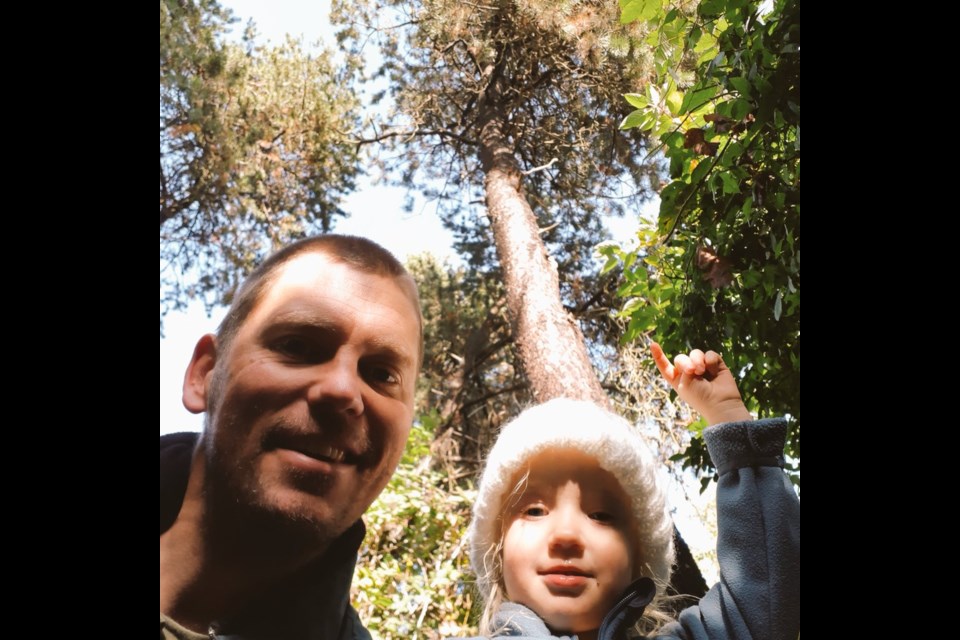A Richmond city councillor is “frustrated” by the removal of 40 trees, as well as impacts to vegetation and peat soils, along a trail near where he grew up.
“There’s just everything wrong about this project,” said Coun. Michael Wolfe.
Wolfe said he also adopted the trail in Odlinwood - north of Alderbridge Way and the Department of National Defense Lands and west of Shell Road - in 2005 through the Adopt-a-Trail program and continues to look after it when he can.
Wolfe, who grew up in the West Cambie area, said Odlinwood is what remains of the bog forest that he would go explore in his early teens, before the subdivision was built.
He said he noticed tree removal signs went up in the area recently, stating work would begin around Sept. 20.
While Wolfe raised the issue at this week’s public works and transportation committee meeting, asking councillors to halt the project until more consultation with stakeholders could be done.
However, he didn’t receive any support.
“I was told at the meeting, that this was a council-approved item, and yes I recall it being approved on the budget last year,” Wolfe said.
He said the project is being completed in two phases, with the first, the western portion which runs to No. 4 Road, already complete. That area, in comparison, was a straight, grassy path, with road runoff and debris underneath.
However, the next section will “cut straight through” the wooded trail, amid full vegetation and the “naturally-occurring plant community of Richmond.”
According to City of Richmond spokesperson Clay Adams, the Alderbridge Way Multi-Use Pathway was approved by city council in 2017 as part of the 2018 Capital Plan.
The multi-phase project, said Adams, is meant to improve cyclist and pedestrian safety in the area by creating a three-metre wide paved pathway along the north side of Alderbridge Way between No. 4 and Shell roads.
The project will also connect to the existing multi-use pathway on Shell Road with the City Centre and Odlinwood.
Wolfe noted that the city’s original plan called for the removal of 65 trees in the area, however, that was revised, so that, rather than sloping the new trail, they would make a retaining wall and remove fewer trees.
“But even that I’m concerned by, because I don’t think there’s enough participation from other groups – Richmond Nature Park is nearby and they expressed some interest in wanting to find ways to recover plants before things get demolished,” said Wolfe.
It’s not just the 40 trees – some of which are heavily used by wildlife for nesting and feeding – that Wolfe is concerned about.
“It’s (also) the vegetation underneath it – it’s the shrubs that don’t grow naturally out of people’s lawns and boulevards, because they need the peat soils, they need the composition that’s down below,” said Wolfe.
“And that’s the third part that this project is going to permanently remove, is the peat soils that could never give rise to native plants again. There’s so few areas left and this is one that the city has jurisdiction over.”
The removal of native vegetation and impacts to peat soil could also open the area up to invasive species, Wolfe said.
He said the city should look at a more permeable option for the area, such as gravel or bark mulch used on the Shell Road and Nature Park trails, rather than asphalt, which requires “complete removal” of root systems.
Asphalt can also put a “lot of contamination” into the surrounding area, said Wolfe, and create a “major heat effect” with less shade available due to the removed trees. Street lights along the path will also impact, for example, owls and bats in the area.
The city should also be doing habitat compensation work before allowing habitat loss, said Wolfe.
However, Adams said that almost 100 trees will be planted along the route to replace the 40 trees that are being removed.
Furthermore, said Adams, an environmental assessment was done – as with all such projects – to look at the habitat impacts before work began.
“The city is monitoring to ensure no nesting birds or wildlife are impacted by the project,” he said.
Adams added that an invasive species management plan is place to remove and manage the ones found in the area, such as Japanese Knotweed.
But Wolfe said he feels “there’s no need to rush” the project.
“I don’t see any urgency in this, so (I’m) quite disappointed that I couldn’t get any support on the committee. I was quite confident that we were going to have another look before the work goes ahead.”



